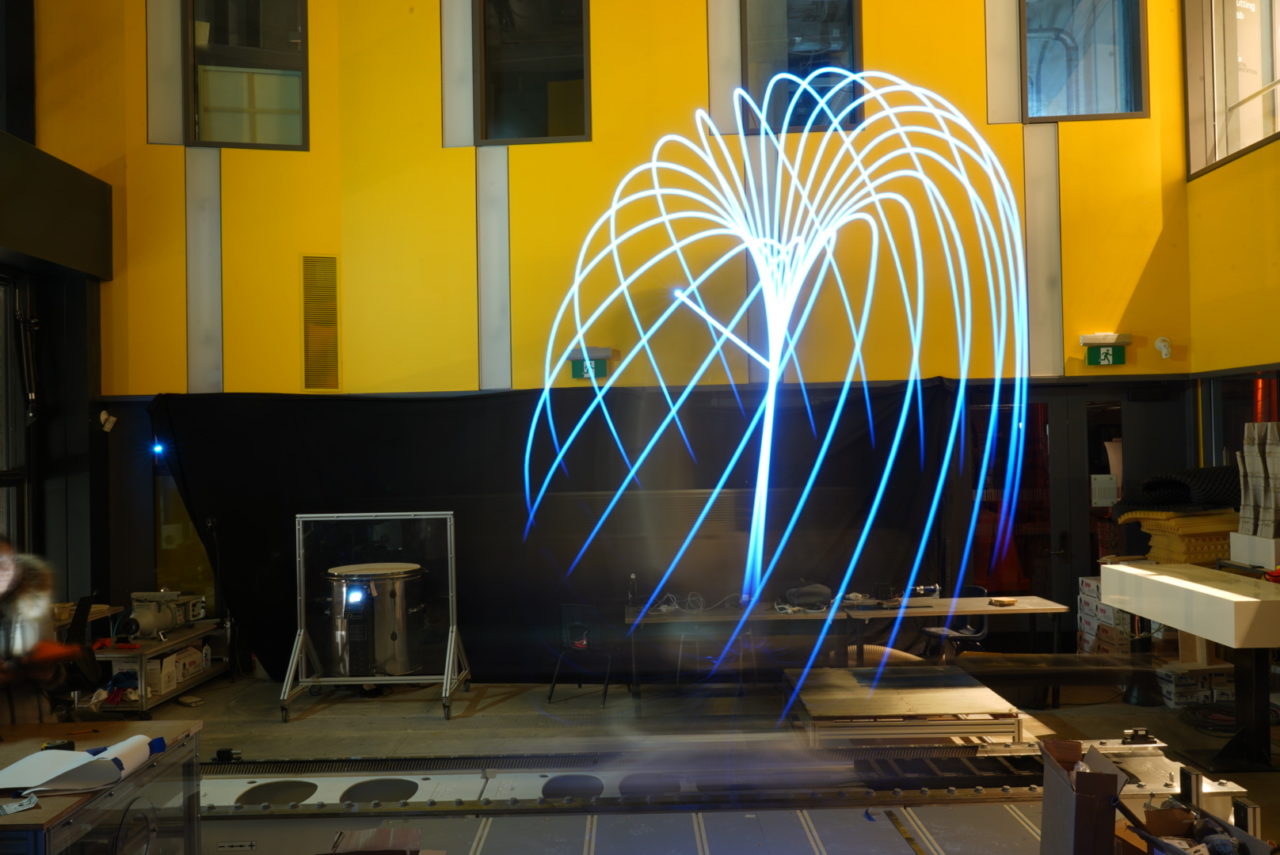Long-exposure light painting using the KUKA robot in a state-of-the-art digital fabrication lab at the Daniels School of Architecture. We came up with a wrinkle that takes the photographic technique of light painting to the next level! We used the precision and speed of an industrial robot to create “brushstrokes” of light in space.

A darkened room, a camera set to an exposure time of several seconds, a movable light source, and a fair amount of delight in experimentation are the basic ingredients that go into Light Painting.
The KUKA runs, as an endless loop, a series of movements (or a choreography) defined in the Grasshopper programming language and, in doing so, repeatedly triggers the playback of the picture files on the Pixelstick. The image itself is 3,000×100 pixels in size and contains various visual and graphic elements. What’s interesting here is the graphic rethinking process—that is, the development of simple graphic elements on the computer in combination with the sequence of movements of the robotic arm. For instance, a fireworks helix results from the swiveling of the KUKA KR16 and the 2-D graphics of a common, everyday stepladder. Due to the brief duration of the test phase, we decided that the installation ought to concentrate on the basic production of simple worlds of imagery. After all, there’s still a lot of potential for development here when 3-D camera tracking shots are precisely coordinated with the sequences of the robot’s control system. This will all come about over the years because what this definitely takes is additional time for extensive experimentation.
An alternative approach to the artwork involves incorporating a paper cap onto the light source, resulting in a different variation of the painting.

We have created a short video showcasing the operation of the KUKA robot during a long exposure photo session. The video demonstrates both the robot’s movements with and without the implementation of a paper cap, providing a visual comparison between the two scenarios.